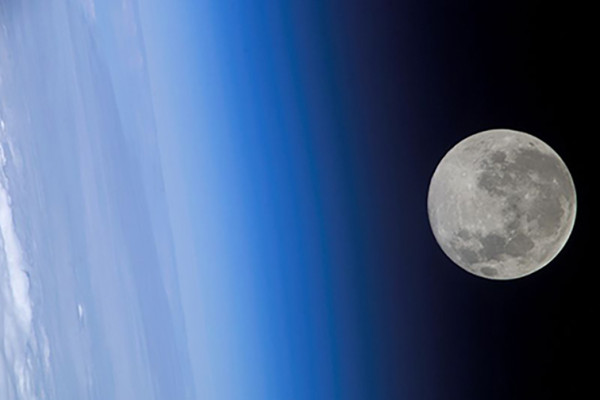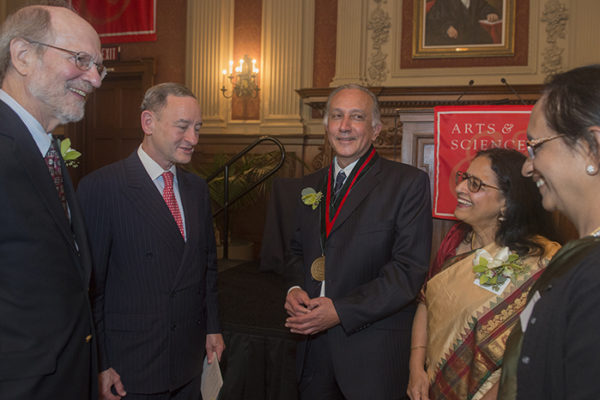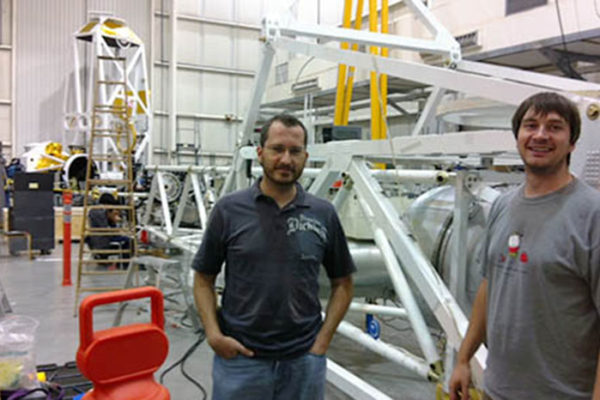Earth and moon’s origins are topic of 2014 McDonnell Distinguished Lecture
The McDonnell Distinguished Lecture this year will describe current understanding of the formation of the solar system, particularly its mix of rocky planets, gas giants and icy planets. The part of the story we have not nailed down, says speaker Alex N. Halliday, PhD, of Oxford University, is the origin of Earth’s moon. The lecture, which takes place at 7 p.m. Wednesday, March 5, in Whitaker Hall, Room 100, is free and open to the public.
Students win international University Physics Competition
A WUSTL team learned last month that they had won the Gold Medal for their analysis of a problem during the international University Physics Competition, held in November. Using the principles of physics, they predicted characteristics of an animal on an extraterrestrial planet.
Cowsik installed as James S. McDonnell Professor of Space Sciences
Ramanath Cowsik, internationally recognized for his contributions to neutrino physics and to the understanding of dark matter in the universe, was installed as the James S. McDonnell Professor of Space Sciences in Arts & Sciences in a ceremony Oct. 7 in Holmes Lounge.
Balloon-borne astronomy experiment X-Calibur racing to hit wind window
In a few days, a balloon-borne telescope sensitive to
the polarization of high-energy “hard” X-rays will ascend to the edge of
the atmosphere above Fort Sumner, N.M. Once aloft, the telescope will stare at black holes, neutron stars
and other exotic astronomical objects that shine brightly in the X-ray part of the spectrum in order to learn about their nature and structure. After years of preparation, the X-Calibur team is racing to get the experiment mission-ready in time for the stratospheric wind event they hope to ride.
Improving undergraduate STEM education is focus of new national initiative
Washington University in St. Louis is one of eight Association of American Universities (AAU) member campuses selected to serve as project sites for the association’s five-year initiative to improve the quality of undergraduate education in science, technology, engineering and mathematics (STEM) fields at its member institutions, AAU officials announced today.
Grains of sand from ancient supernova found in meteorites
Scientists working at Washington University in St. Louis have discovered two tiny grains of silica (SiO2; the most common constituent of sand) in meteorites that fell to earth in Antarctica. Because of their isotopic composition these two grains are thought to be pure samples from a massive star that exploded before the birth of the solar system, perhaps the supernova whose explosion is thought to have triggered the collapse of a giant molecular cloud, giving birth to the Sun.
Stardust in the laboratory the topic of 2013 McDonnell Distinguished Lecture
Thomas J. Bernatowicz, professor of physics in
Arts & Sciences, will deliver the McDonnell Distinguished Lecture at
7 p.m. Wednesday, April 10, in Room 105, Steinberg Hall, at Washington
University in St. Louis. He will discuss what cosmic dust carried to
Earth by meteorites has revealed about the creation of the elements by
stars and supernovae. The St. Louis community is cordially invited to the lecture, which is sponsored by the McDonnell Center for the Space Sciences.
Saturday Science takes a paradoxical turn
The popular Saturday Science seminar series celebrates its 20th year by tackling on paradoxes, those fascinating little conundrums that are sometimes just words colliding but other times are cracks in our understanding of the world that, when prised open, give access to a much deeper understanding. The first lecture is Saturday, April 6.
When it rains these days, does it pour?
For his undergraduate thesis project, senior Thomas Muschninski working with professor of physics Jonathan Katz published an article in Nature Climate Change showing that the signature of an increase in storminess could be extracted from precipitation data for the Olympic Peninsula in Washington State. The scientists suspect the same signature lies hidden under naturally stormier weather at other locations as well.
Super-TIGER lying low for the Southern Hemisphere winter
Late Friday, Feb. 2, an overcast day in St. Louis, the
twitter feed for the Super-TIGER cosmic ray experiment burst into life,
as the Super-TIGER team received word that NASA’s Columbia Scientific Balloon
Facility, which provides operations support for scientific ballooning in
Antarctica, had decided to terminate the flight of the balloon carrying
their detector aloft in the polar vortex.
View More Stories



